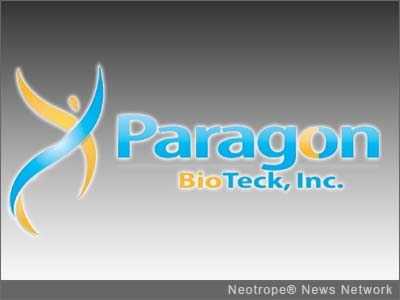
PORTLAND, Ore. /eNewsChannels/ — NEWS: Paragon BioTeck, Inc., a privately held biopharmaceutical company specializing in the development of ophthalmic pharmaceuticals and therapies, received FDA approval of Phenylephrine Hydrochloride Ophthalmic Solution, USP 2.5 percent and 10 percent, to dilate the pupil on March 21, 2013. There is no longer a need to continue using unapproved versions of Phenylephrine Hydrochloride Ophthalmic Solution, as Paragon BioTeck’s FDA approved Phenylephrine Hydrochloride Ophthalmic Solution, USP 2.5 percent and 10 percent is readily available through Bausch + Lomb.
“Paragon is committed to working proactively with the FDA in an effort to prevent disrupting supply of this and future drugs that play a vital role in managing ocular health,” said Patrick H. Witham, President and CEO of Paragon BioTeck, Inc.
About Phenylephrine Hydrochloride Ophthalmic Solution:
Phenylephrine Hydrochloride Ophthalmic Solution, USP 2.5 percent and 10 percent is an alpha-1 adrenergic receptor agonist used for dilation of the pupil due to its vasoconstrictor and mydriatic action. Phenylephrine possesses predominantly alpha-adrenergic effects. In the eye, phenylephrine acts locally as a potent vasoconstrictor and mydriatic by constricting ophthalmic blood vessels and the radial muscle of the iris.
Phenylephrine Hydrochloride Ophthalmic Solution Important Safety Information:
Phenylephrine Hydrochloride Ophthalmic Solution, USP 10 percent is contraindicated in patients with hypertension or thyrotoxicosis, as well as in pediatric patients under the age of one due to the increased risk of systemic toxicity. Phenylephrine Hydrochloride Ophthalmic Solution, USP 2.5 percent should be used in these patients. It’s for topical ophthalmic use only, and not for injection.
Serious cardiovascular reactions, including ventricular arrhythmias and myocardial infarctions, some fatal, and significant elevations in blood pressure have been reported. Caution is advised in pediatric patients less than five years of age, and in patients with elevated blood pressure, cardiovascular disease or hyperthyroidism. Blood pressure should be monitored in patients with cardiovascular or endocrine disease. Rebound miosis has been reported one day after instillation.
Ocular adverse reactions include eye pain and stinging on instillation, temporary blurred vision and photophobia. Cardiovascular adverse reactions include increase in blood pressure, syncope, myocardial infarction, tachycardia, arrhythmia and subarachnoid hemorrhage.
About Bausch + Lomb:
Bausch + Lomb, a Valeant Pharmaceuticals International, Inc. company, is a leading global eye health organization that is solely focused on protecting, enhancing, and restoring people’s eyesight. Our core businesses include ophthalmic pharmaceuticals, contact lenses, lens care products, ophthalmic surgical devices and instruments. We develop, manufacture and market one of the most comprehensive product portfolios in our industry, which are available in more than 100 countries.
About Paragon BioTeck, Inc.:
Paragon BioTeck is a privately held ophthalmic-focused biopharmaceutical and medical device company pursuing the development and commercialization of products addressing unmet medical needs in the fight to protect and preserve eyesight. For more information on the company and its work, visit http://www.paragonbioteck.com/ .
For more information please call 888-424-1192.
This version of news story is Copr. © 2014 eNewsChannels™ (www.enewschannels.com) and the Neotrope® News Network – all commercial and reprint rights reserved. Unauthorized reproduction in whole or in part without express permission is prohibited.



